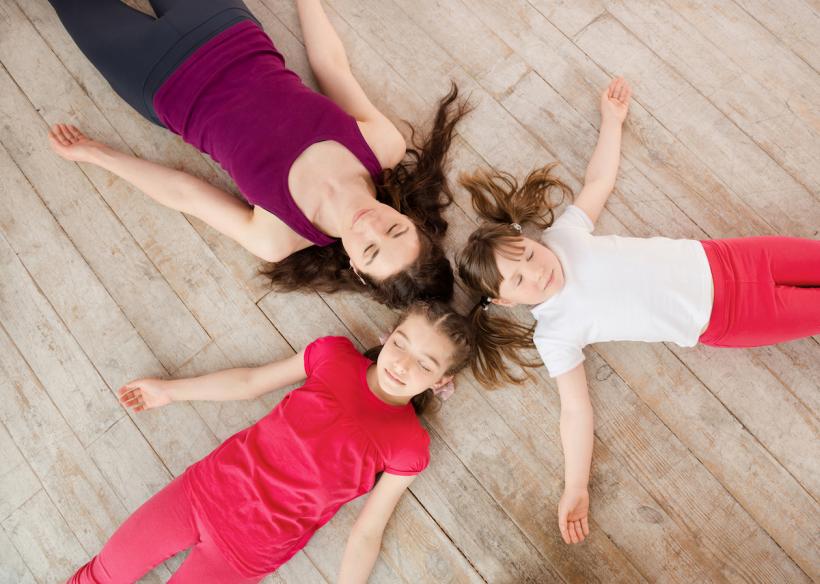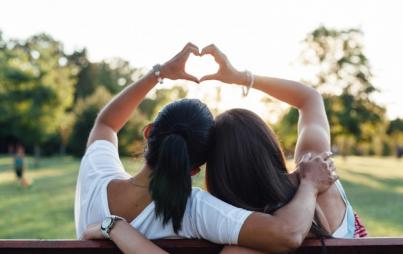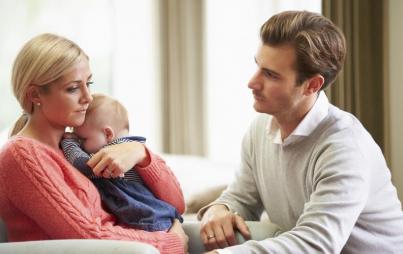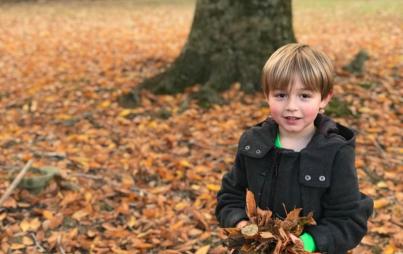
Since breathing can be a subject of much controversy (at least it can be in my house), try sneaking in mindfulness under the guise of a game.
My kids have no chill. They spend most of their days in an uncentered spiral of emotions with laughter and rage ready to switch off at any instance.
I get it — because they’re kids.
I get it even more because they’re my kids and regulating emotions was not my strong suit for a very long time.
Before I started delving into mindfulness meditation — a practice designed to bring you into present moment awareness — I was a hot mess of emotional distress pretty much all the time. While I still struggle with staying in the present moment, not letting anxiety or unchecked anger rule my world, meditation has helped me tremendously, and I owe a lot of my happiness to practicing mindfulness.
So it’s not terribly surprising to me that mindfulness has significant benefits for kids, just like it does for adults. Emerging research regarding adolescents shows that mindfulness meditation practices for kids help decrease stress, anxiety, and depression while improving self-awareness, focus, compassion, and empathy. In young children, it particularly helps them foster a sense of self-regulation, which I can tell you from experience is an area they sorely lack on their own.
While it may not be the cure-all for tantrums and bad behavior, helping kids self-regulate and develop mindfulness in their lives is going to produce positive results. I certainly imagine my life would have been different if I had some mindfulness training earlier on in life.
But how do I go about actually practicing mindfulness with my kids when I still can’t seem to get them to find their shoes in 30 minutes or less? To be honest, it’s not always easy. Some days they are just not into it, or I don’t have the patience for it. However, there are a few key things that I have found really helpful in getting my kids started on the path to a more mindful life.
1. Double up your practice.
I’m not going to lie, meditating with your kids is not the peaceful mindfulness practice you may already know and love. If mindfulness is already part of your day, don’t just add your children to your practice. Add another practice that involves them, keeping one that is just for you.
2. Lower your expectations.
OK, now lower them even further. Lower the bar so far down it’s practically scraping the floor. Seriously, your expectations cannot be low enough, especially if you are aiming to practice with preschool age kids, and especially if those kids are as stubborn as mine. This was my first attempt:
Me: Can you take a big breath in like this?
Child: NO. I don’t know HOW to BREATHE.
3. Make it a game.
Since breathing can be a subject of much controversy (at least it can be in my house), try sneaking in mindfulness under the guise of a game. You can buy a chime or bell and have your kids listen with their eyes closed until they can no longer hear any noise (usually about 30 seconds). You can even download an app to make it easier. If they aren’t buying it, try repackaging it as an exercise in using their princess powers or spidey senses — I mean, whatever it takes, right?
4. Use a breathing buddy.
Learning to notice breath is an advanced concept for younger kids, so to make it easier to see and feel, use a “breathing buddy.” Let them pick out a favorite stuffed animal and place it on their stomach (it’s easiest if they are lying on their backs) where they can see their breathing buddy move up and down with their breath. Taking regular breaths will only move them a little while big, deep breaths will make them move a lot. (They might try to push their breathing buddy off their belly with exaggerated breaths. I assume this is all part of the process, yes?)
5. Take it outdoors.
Cultivating a still, calm practice at home is something that is going to take some serious time, but mindfulness doesn’t have to be as stagnant as sitting on the floor and focusing on the breath. Kids can get a good start on mindfulness by going on walks and being guided to pay closer attention to their surroundings and what is going on inside. What is the weather like outside? How does the sun or the wind feel against their skin? Notice how it feels when you take a big breath of fresh air. Be aware of your emotions as you walk. Be aware of the environment around you. It will make your walks a more interactive bonding experience while laying the groundwork for mindfulness skills.







![Photo By Dr. François S. Clemmons [CC BY-SA 4.0 (https://creativecommons.org/licenses/by-sa/4.0)], from Wikimedia Commons](/sites/default/files/styles/profile/public/images/article/2019-06/Mr.%2520Rogers%2520%25281%2529.png?itok=LLdrwTAP)
